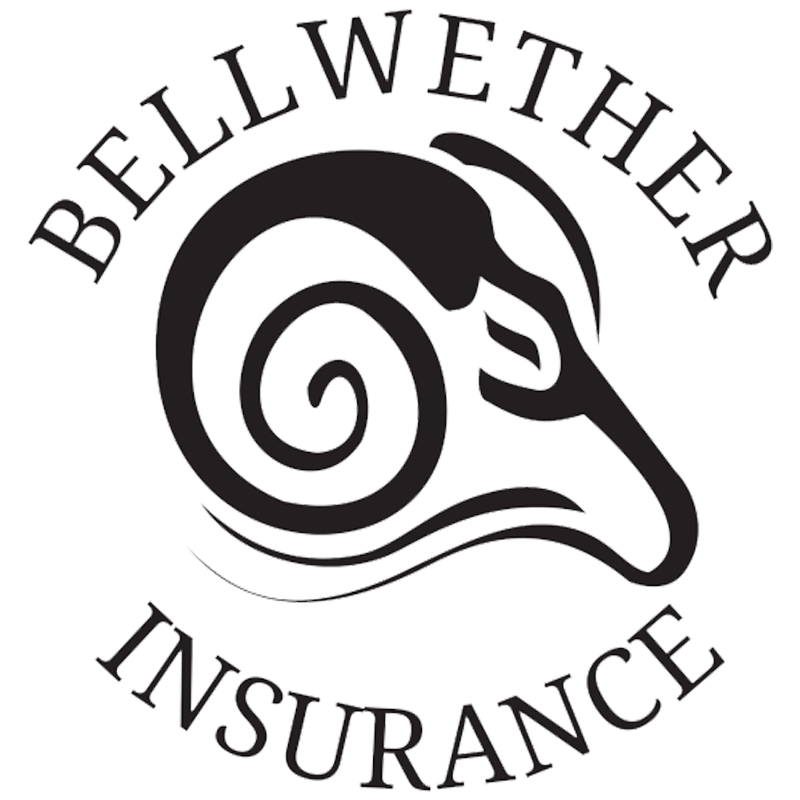How Much Does Arborist Insurance Cost?
See How We're Different
or call us: 216-600-2828
Arborist insurance is an essential aspect of running a successful tree care business. It provides financial protection against various risks and liabilities that arborists face in their line of work. However, the cost of arborist insurance can vary significantly depending on several factors. In this article, we will delve into the basics of arborist insurance, explore the factors that influence its cost, discuss the different types of arborist insurance and their associated costs, and provide tips on how to reduce insurance expenses. We will also address some frequently asked questions regarding arborist insurance costs.
Understanding the Basics of Arborist Insurance
Arborist insurance is a specialized form of insurance designed to protect arborists, tree care professionals, and their businesses from potential risks and liabilities. It provides coverage for property damage, bodily injury, and other risks associated with arboriculture activities.
Arborists play a crucial role in maintaining the health and aesthetics of trees. They are skilled professionals who understand the complexities of tree care, from pruning and trimming to tree removal and disease management. However, their work is not without risks. Every day, arborists face various challenges that can lead to accidents or unforeseen circumstances.
One of the key components of arborist insurance is general liability insurance. This coverage protects arborists from claims arising from property damage or bodily injury caused by their work. For example, if an arborist accidentally damages a client's property while removing a tree, general liability insurance can cover the cost of repairs or replacement.
Another important aspect of arborist insurance is professional liability insurance, also known as errors and omissions insurance. This coverage is specifically designed to protect arborists from claims related to professional negligence or mistakes. For instance, if an arborist misdiagnoses a tree disease and recommends the wrong treatment, resulting in the death of the tree, professional liability insurance can cover the legal costs and damages associated with the claim.
In addition to general and professional liability insurance, arborists also need commercial auto insurance. Arboriculture often involves transporting equipment and machinery to different locations. Commercial auto insurance provides coverage for vehicles used in arborist operations, protecting against accidents, theft, and damage to the vehicle or its contents.
What is Arborist Insurance?
Arborist insurance is a tailored insurance policy that combines several types of coverage to meet the unique needs of arborists. It goes beyond the standard insurance policies and takes into account the specific risks and liabilities associated with arboriculture. By having a comprehensive arborist insurance policy, tree care professionals can have peace of mind knowing that they are protected from potential financial losses.
Arborist insurance policies are customizable, allowing arborists to choose the coverage limits and deductibles that best suit their needs. The cost of arborist insurance varies depending on factors such as the size of the business, the number of employees, the types of services provided, and the location of the operations.
Why Do Arborists Need Insurance?
Arborists face a range of risks in their daily work. From accidental property damage to personal injury claims, the potential liabilities can be substantial. Trees are often located near buildings, power lines, and other structures, making the risk of property damage or injury higher. Additionally, the use of heavy machinery and equipment increases the likelihood of accidents.
Having adequate insurance coverage ensures that arborists are protected financially and can continue their operations without the fear of unexpected expenses or legal issues. Without insurance, arborists would be personally responsible for any damages or injuries that occur during their work, which could result in significant financial hardship or even bankruptcy.
Furthermore, many clients require arborists to have insurance before hiring them for tree care services. Insurance provides reassurance to clients that they will not be held liable for any accidents or damages that may occur during the arborist's work. It also demonstrates professionalism and a commitment to safety, which can help arborists attract more clients and build a reputable business.
In conclusion, arborist insurance is essential for protecting arborists, tree care professionals, and their businesses from potential risks and liabilities. It provides coverage for property damage, bodily injury, and other risks associated with arboriculture activities. By having the right insurance coverage, arborists can focus on their work with confidence, knowing that they are financially protected in case of unexpected events.
Factors Influencing the Cost of Arborist Insurance
The cost of arborist insurance can vary significantly based on several factors. Understanding these factors can help arborists make informed decisions when selecting insurance coverage and managing their expenses.
Arborists provide essential services that involve working with trees and vegetation. As with any profession, there are risks involved, and having the right insurance coverage is crucial. Let's explore some additional factors that can influence the cost of arborist insurance.
Type of Arborist Services Offered
The type of services offered by an arborist can impact insurance costs. The more specialized and high-risk the services, the higher the insurance premiums may be. For example, if an arborist provides services such as tree removal, stump grinding, or hazardous tree assessments, the insurance costs may be higher compared to those offering more routine maintenance services.
Tree removal can be a dangerous task, involving the use of heavy machinery and working at heights. The risk of property damage or personal injury is higher in such scenarios, leading to increased insurance costs. On the other hand, arborists who primarily focus on tree pruning and regular maintenance may have lower insurance premiums due to the lower risk associated with these services.
Business Size and Insurance Cost
The size of an arborist's business can also influence insurance costs. Larger businesses with more employees and equipment may have higher insurance premiums due to increased exposure to potential risks.
When an arborist business expands, it often means more employees are involved in performing various tasks. With more people working on different projects simultaneously, the chances of accidents or property damage may increase. Insurance providers take this into account when determining premiums, as a larger business may have a higher likelihood of filing claims.
Additionally, the value of equipment owned by the business can also impact insurance costs. Arborists rely on specialized tools and machinery to carry out their work efficiently. The replacement or repair costs associated with these tools can be significant, and insurance providers consider this when calculating premiums.
Location and Its Impact on Insurance Cost
The location of an arborist's business can also play a role in insurance costs. Different regions may have different levels of risk associated with tree care activities, which can affect the premium rates. For example, if an arborist operates in an area prone to natural disasters or has a higher frequency of claims, the insurance costs may be higher.
Arborists working in regions with a higher likelihood of severe weather conditions, such as hurricanes or heavy snowfall, may face increased insurance costs. The potential for tree damage and the subsequent claims that may arise from such events contribute to higher premiums in these areas.
Furthermore, the level of competition among arborists in a particular location can also influence insurance costs. If there are numerous arborist businesses in a concentrated area, insurance providers may adjust their rates to remain competitive in the market.
By considering these factors, arborists can gain a better understanding of the various elements that contribute to the cost of insurance. It is essential to evaluate the specific needs and risks associated with their business to ensure they have adequate coverage at a reasonable price.
Types of Arborist Insurance and Their Costs
Arborist insurance is an essential aspect of running a successful arborist business. It not only protects arborists from potential financial losses but also provides peace of mind to both the arborists and their clients. Generally, arborist insurance consists of three main types of coverage: general liability insurance, professional liability insurance, and commercial auto insurance. Let's dive deeper into each type of insurance and explore their costs.
General Liability Insurance for Arborists
General liability insurance is the foundation of arborist insurance coverage. It safeguards arborists against third-party claims for bodily injury or property damage caused by their operations. For example, if an arborist accidentally drops a heavy branch onto a parked car, general liability insurance would cover the damages. The cost of general liability insurance can vary depending on several factors, including the coverage limits, deductible, and the arborist's risk profile.
Arborists who work in high-risk areas or handle large-scale projects may have higher insurance premiums due to the increased likelihood of accidents or property damage. On the other hand, arborists with a clean track record and a history of implementing safety measures may enjoy lower insurance costs. It is crucial for arborists to carefully assess their insurance needs and work with reputable insurance providers to find the most suitable coverage at a reasonable cost.
Professional Liability Insurance for Arborists
Arborists, like any other professionals, can make mistakes or face claims of negligence. Professional liability insurance, also known as errors and omissions insurance, provides coverage for such claims. It protects arborists from financial losses resulting from errors, omissions, or professional negligence that may occur during their work. For instance, if an arborist misjudges the stability of a tree and it falls on a client's house, professional liability insurance would cover the damages.
The cost of professional liability insurance for arborists depends on various factors. Insurance providers consider the arborist's experience, the scope of services provided, and the chosen coverage limits when determining the premium. Arborists with extensive experience and a track record of successful projects may benefit from lower insurance costs compared to those who are just starting their careers. Additionally, the complexity and risks associated with the arborist's services can also influence the insurance premium.
Commercial Auto Insurance for Arborists
Arborists often rely on vehicles as an integral part of their business operations. Whether it's transporting equipment, commuting to job sites, or providing on-site consultations, having commercial auto insurance is crucial. Commercial auto insurance provides coverage for accidents, theft, and damage to the arborist's vehicles. It ensures that arborists are protected financially in case of any unforeseen events on the road.
The cost of commercial auto insurance for arborists can vary based on several factors. Insurance providers consider the number of vehicles insured, their value, and the driving history of the arborist or their employees. Arborists with a fleet of vehicles may have higher insurance premiums compared to those who operate with a single vehicle. Additionally, a clean driving record and implementing safety measures, such as driver training programs, can help reduce insurance costs.
As an arborist, investing in comprehensive insurance coverage is essential for the long-term success and stability of your business. While insurance costs may seem like an additional expense, they provide invaluable protection against potential financial losses that could arise from accidents, mistakes, or unforeseen circumstances. By carefully assessing your insurance needs and working with reputable insurance providers, you can find the right coverage at a reasonable cost, ensuring the continued growth and success of your arborist business.
How to Reduce Arborist Insurance Costs
While arborist insurance is necessary for protecting against potential risks, there are ways to manage and reduce insurance costs. Implementing risk management strategies and selecting the right insurance provider can help arborists save money without compromising coverage.
Risk Management Strategies
Implementing effective risk management strategies can help minimize potential risks and insurance claims. This may include proper training for employees, regular equipment maintenance, and thorough documentation of work performed. By demonstrating proactive risk management practices, arborists may be able to negotiate lower insurance premiums.
Choosing the Right Insurance Provider
When selecting an insurance provider, it's vital for arborists to compare quotes from multiple insurers and review the coverage options offered. Working with an experienced insurance agent who understands the unique risks faced by arborists can also help in finding comprehensive coverage at competitive rates.
Frequently Asked Questions about Arborist Insurance Costs
Can I Get Arborist Insurance If I'm Self-Employed?
Absolutely! Self-employed arborists can and should obtain insurance coverage to protect themselves from potential liabilities. Insurance providers offer policies specifically designed for self-employed individuals.
Does Arborist Insurance Cover Equipment Damage?
Arborist insurance policies typically provide coverage for damage to equipment, tools, and machinery used in tree care operations. However, it's essential to review the policy terms and conditions to understand the extent of coverage and any limitations or exclusions that may apply.
By understanding the basics of arborist insurance, considering various influencing factors, exploring different types of coverage, and adopting cost-saving strategies, arborists can navigate the world of insurance and find coverage that offers financial protection and peace of mind. Remember, it's crucial to assess individual needs and consult with insurance professionals to determine the most appropriate and cost-effective insurance solution for your specific arborist business.












